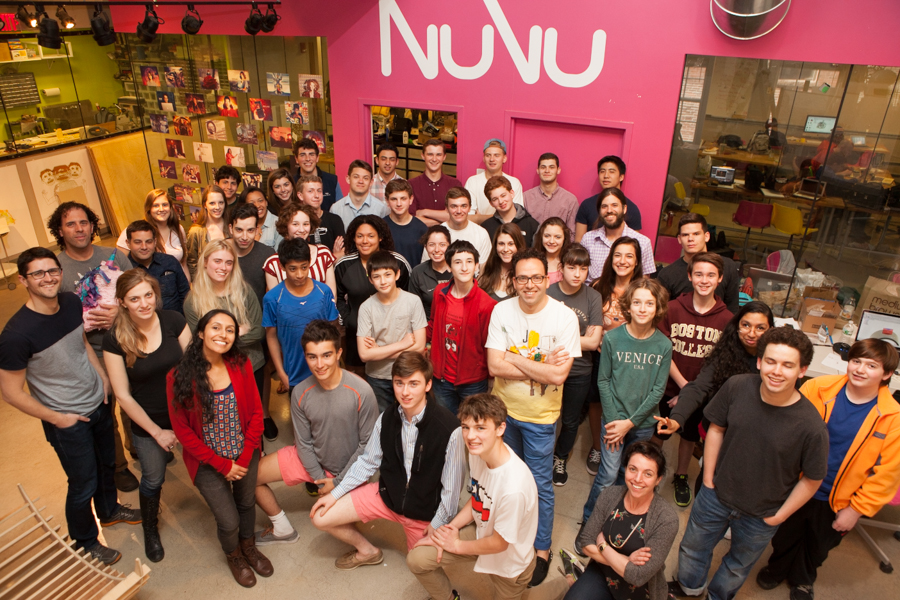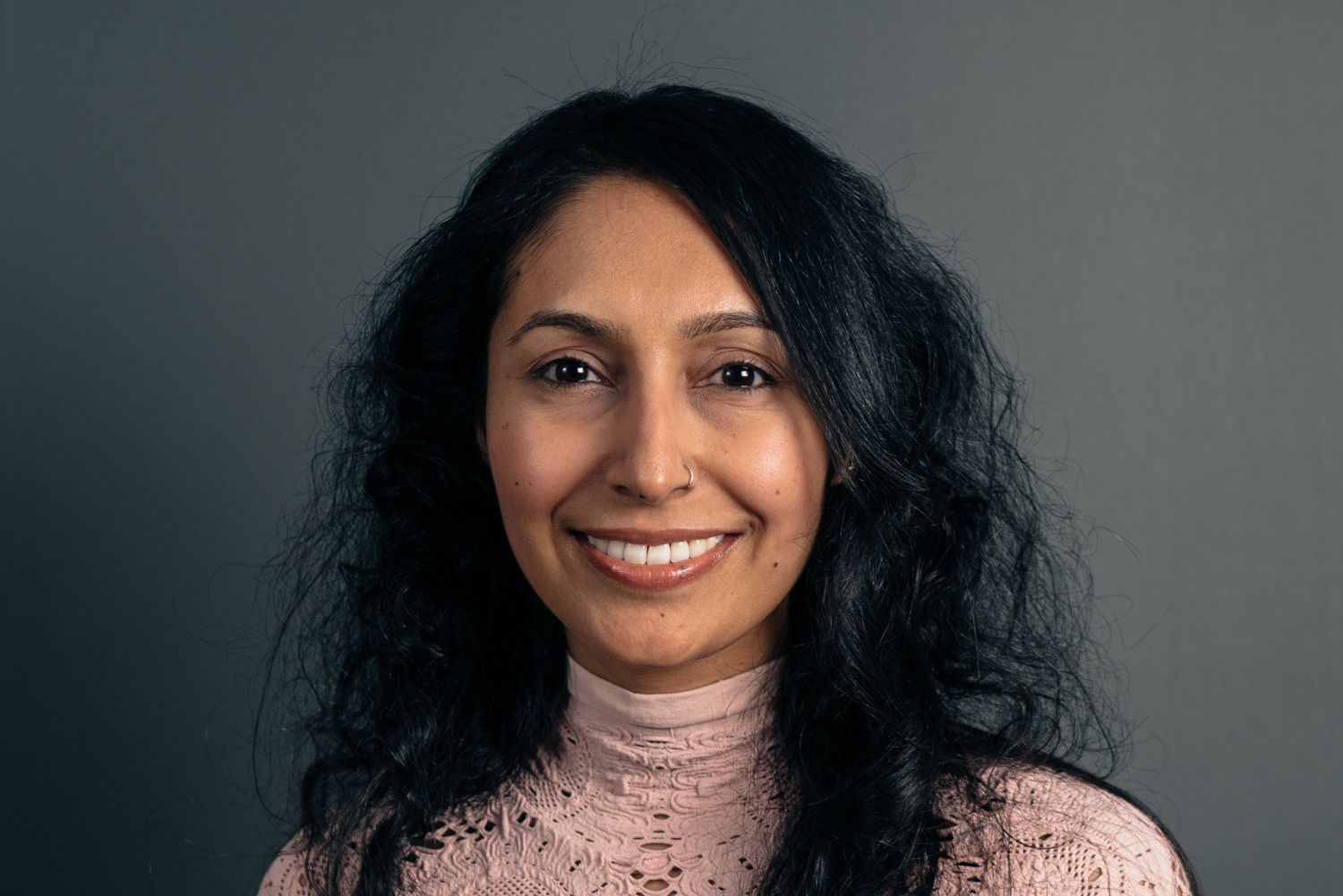October 20, 2025
How NuVu High School’s Studio Model Is Transforming the Future of Learning
A Conversation with NuVu Co-Founder Saba Ghole: Part II

Earlier this year, we profiled NuVu co-founder Saba Ghole in A Blueprint for Transformation, exploring how she helped reimagine what school could be. In this follow-up conversation, Saba dives deeper into the why behind NuVu—why it was created and why it feels so different from traditional schools.
NuVu: NuVu was founded to rethink what school could be. What problem were you, Saeed, and David trying to solve when you created this model?
Saba: Back in 2010, we looked around at K–12 education and saw a huge gap: students weren’t getting meaningful, real-world experiences or developing the creative capacities essential for the future. Why did they have to wait until grad school—if they ever got there—to do impactful work? We wanted to change that.
We started with the most rigid part of K–12—high school—and reimagined it completely. What if the focus wasn’t on learning for the test but on learning how to learn? What if high school became a place for exploration, where learning extended beyond the classroom and into the community?

We threw out the traditional schedule, subjects, grades, and even the bell—and built NuVu from the ground up. We created interdisciplinary studios where students of all ages worked side by side on open-ended challenges. We replaced tests with portfolios and hierarchy with collaboration. Learning became fast-paced and creative because we believed that when you trust students with high expectations, they rise to them—and they did.
Through the design process, they learned to think critically about the world around them and to turn ideas into action. The depth of learning couldn’t be measured by a grade; students were developing the ability to learn, adapt, and apply knowledge in new ways.
Fifteen years later, in an age of AI, shifting job markets, and global uncertainty, that process—learning how to learn—matters more than ever.
Learning became fast-paced and creative because we believed that when you trust students with high expectations, they rise to them—and they did.
NuVu: How does NuVu challenge traditional assumptions about what high school should look like?
Saba: At NuVu, we rewrote the script for “school.” We don’t assume adults are the only teachers—our students constantly teach us and each other. Recently, I listened to students in a Cryptography studio explain how computer viruses work; I had no idea. In that moment, I was the student.
Everyone at NuVu embodies that same spirit of curiosity. Students arrive with endless ideas; our job is to build an environment where curiosity meets real-world problem-solving. Instead of memorizing content for a test, they design, build, and prototype around local and global issues. They become creators, not consumers.
We don’t have grades, lectures, or subjects. Learning happens through interdisciplinary projects that tackle authentic challenges. When you give students hands-on experiences, trust, and creative freedom, they don’t just learn deeply—they discover what they’re capable of. That’s the essence of empowerment.
NuVu: For families unfamiliar with project-based learning, how would you describe what a “studio” is and why it’s so powerful?
Saba: A studio is the opposite of a traditional classroom. Instead of lectures and worksheets, students tackle real-world challenges, blending content from multiple disciplines and learning by doing. Each studio is immersive—students design, prototype, test, fail, and try again, guided by an expert coach.
Studios flip the learning process. Students aren’t just learning about something—they’re doing it. They build knowledge, apply it immediately, and develop a process for learning that lasts. Collaboration is key: every project happens in teams, where students learn to negotiate ideas, give feedback, and see from new perspectives.
NuVu: Without grades or traditional subjects, how do students—and parents—measure growth and success?
Saba: Imagine you’re a parent with twins. You wouldn’t compare them to each other—you’d describe how each grows in their own way. That’s how we think about progress at NuVu.
.jpg)
We measure growth through process, reflection, and performance: how students collaborate, brainstorm, and communicate ideas during reviews. Growth is documented through written evaluations, self-assessments, and ongoing advisories. Students build portfolios that capture their process—ideas, prototypes, and revisions over time—showing how their thinking evolves.
Reflection happens daily through desk crits, blogs, and exhibitions. Together, these give us a clear picture of how each student is growing as a learner and thinker.
NuVu: What kinds of students thrive in this environment? And what kind of student surprises you by thriving here?
Saba: Curious, self-motivated students thrive naturally—but we’re most inspired by those who struggled in traditional settings. Once they realize their ideas and hands-on problem-solving matter, they often flourish in remarkable ways.
I remember a student who joined a fashion-based studio and was frustrated throughout the semester. A year later, her mother told me NuVu had completely transformed her. Back at her public school, she joined the robotics team and pursued STEM courses—things she’d never have imagined before.
That experience reminded me that growth doesn’t always look joyful or linear in the moment. Sometimes the most frustrated students end up thriving the most. Learning isn’t always visible, but it’s always happening.
.JPG)
NuVu: You’ve watched so many students graduate from NuVu. What are some of the most striking examples of how they’ve applied this kind of learning beyond high school?
Saba: Many alumni carry the studio mindset into whatever they do—launching startups, leading new initiatives, or conducting research in fields from engineering to social justice. They’re comfortable with ambiguity, they collaborate across disciplines, and they invent new paths rather than follow existing ones.
One former student recently launched a graphic novel led by a female superhero—a 12-year-old wheelchair user rebuilding her country after war. He’s now a disability rights advocate and inventor promoting accessibility worldwide.
Stories like these reaffirm that unlocking each student’s unique potential should be at the heart of every school’s mission.
NuVu: Why is it important to let students lead their own learning, even when it’s messy or uncertain?
Saba: Real learning is rarely neat. When students take ownership, projects fail, ideas shift, frustration sets in—but that’s where the deepest learning happens. When students navigate uncertainty, they build resilience, creativity, and confidence—the skills that last a lifetime.
NuVu: How do you see NuVu influencing the future of education—both through NuVu High School and through NuVuX’s partnerships around the world?
Saba: For 15 years, NuVu High School has been our living lab—a place where students become active creators instead of passive consumers. We’ve built a full school around creativity, collaboration, and critical thinking, and we continue to evolve for our students.
Through NuVuX, we help schools worldwide adapt the studio approach to their own contexts and communities. The goal isn’t to franchise a formula—it’s to spark transformation. When educators see what’s possible, they start reimagining their own classrooms—and that’s how real change begins.






